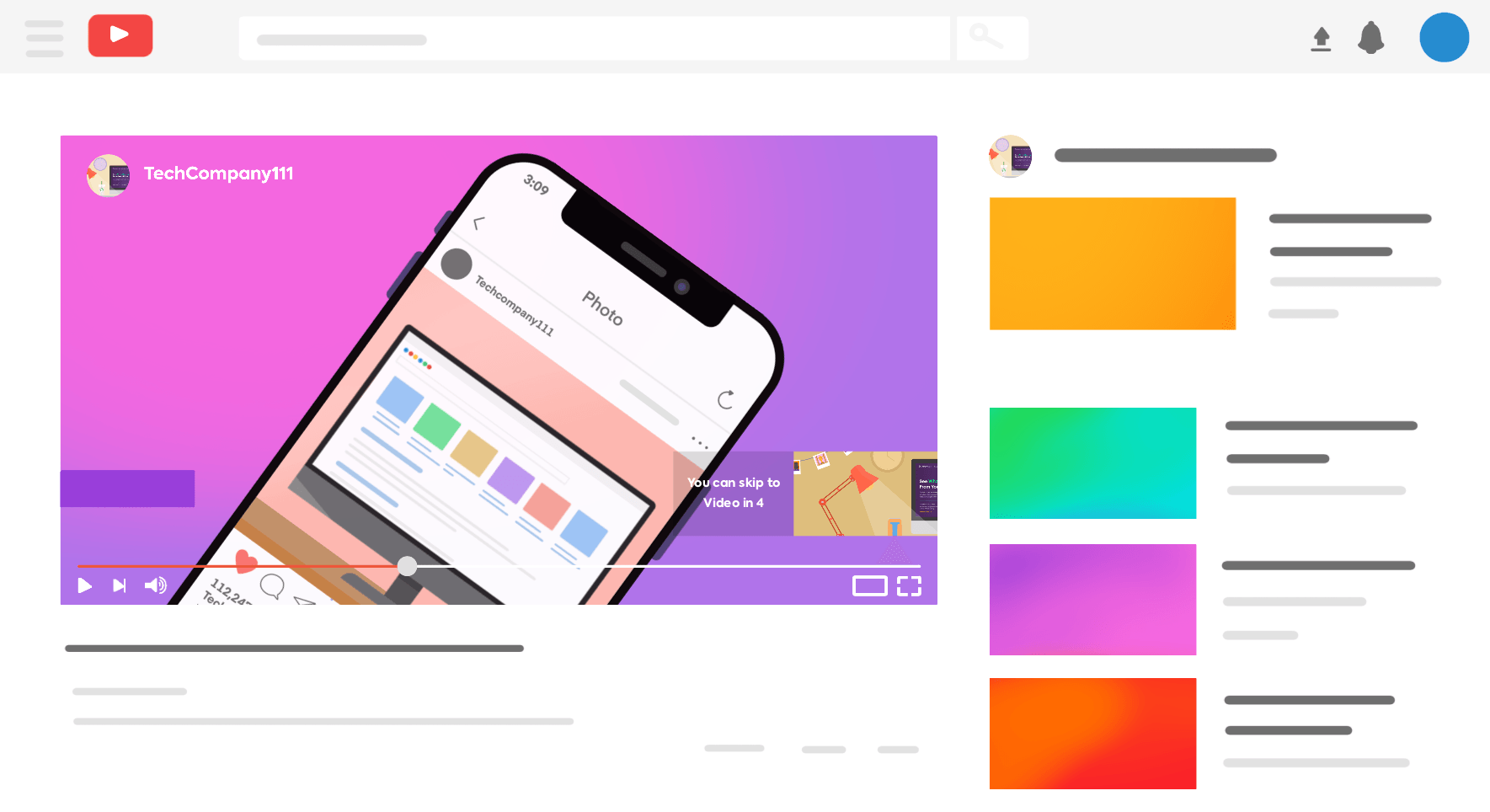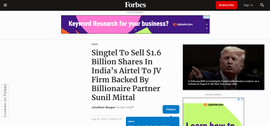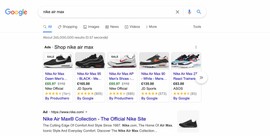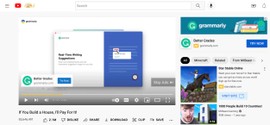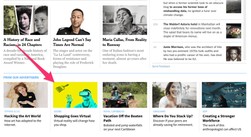Looking to diversify your digital advertising strategy?
Having a solid website and social media presence is a great starting point. But there are many more ways of getting your brand, product, or service in front of the right people to ultimately drive more sales and conversions.
You can’t do it all at once of course (well, you could try, but it’s a recipe for burnout). So it’s all about choosing the right combination of advertising strategies based on your target audience, budget, and goals, to make sure they see your ads.
To help you weigh up the options available to you, we’ve summarised 10 of the most effective types of digital advertising. Some you’ve almost certainly heard of before. Others may be more unfamiliar. But each one presents its own unique set of benefits and downsides. So let’s dive in.
1. Search Engine Marketing
Search engine marketing has been popular for decades now. And it’s probably one of the types of digital advertising you’re most familiar with.
On one hand, you’ve got paid search, i.e. ads based on what the user actually types into the search bar, not what they may potentially be interested in. It gives you instant exposure on your search engine of choice. And with ads placed at the top of the page above organic results, it gives them a much higher chance of being clicked.
But search engine marketing (SEM) is not limited to paid search. Generally speaking, the objective of SEM is to rank for a specific keyword. To be the first option, or at least among the top 10 options, that appear when users search for it. But you don’t always have to pay to appear in the top half of the results page. This is why search engine optimization (SEO) is so important.
If the content of one of your web pages or blog posts is relevant enough to the user’s search intent (i.e. the information or service they’re looking for) when they type a particular keyword, you can rank for the same queries you’d otherwise pay to appear on. And when a user clicks on an organic result rather than an ad, it doesn’t cost your business a penny.
Getting into the nuances of paid vs organic search is beyond the scope of this article. But rather than thinking about them as competing alternatives, use both as part of a holistic SEM strategy. Your paid strategy should ideally inform your organic strategy, and vice versa.
2. Display Advertising
These are typically referred to as banner ads. They take many forms but generally consist of text, an image or video, and a call to action attached to a URL. Once you’ve designed your ad and are ready for the world to see it, a display ad network (like Google Display Network) distributes it to ad-publishing websites which are at least somewhat relevant to the product or service you’re offering.
The same principle applies to social media – Facebook advertising, for example. In this case you pay for your ads to be displayed to a specific group of people, namely, your target audience. They’re not proactively looking for your product like they might be on search, but they may be interested in learning more if it’s placed in front of them.
Display advertising is great for brand awareness. It’s relatively simple and quick to implement. And if done well, it provides a good return on investment. In the example below, there are display ads above the headline and on the left-hand side of the page, plus a display video ad above the banner.
However, a common problem with display ads is they’re not always contextually relevant to the user. And this problem is something we’ll be seeing a lot more of as the industry moves away from ads driven by third-party cookies, which track users around the web.
For example, if you’re on a soccer website and see ads for soccer boots, you’d be more inclined to buy. But if you see ads for sausages, you probably aren’t. Furthermore, display ads can also put brand safety at risk. You wouldn’t want your ads popping up next to extremist right-wing content, but that’s exactly what happened to a number of brands including L’Oreal and The Guardian in 2017, when the Google Display Network failed to screen out inappropriate ad placements.
Brand safety aside, the lack of consistent contextual relevance means display ads have a lower clickthrough rate (CTR) than paid search ads. Worth bearing in mind, depending on your target audience.
3. Google Shopping Ads
Google Shopping acts as a comparison search engine, allowing users to search for products and compare prices between different sellers.
It’s trickier to set up than display ads, but Google’s algorithm does the bulk of the work after that, automatically pulling data from your store, making ads for products, and matching them to search queries.
Because of their visual appeal, Google Shopping Ads get priority right at the top of search result pages. So if your product needs to be seen to be appreciated, then shopping ads could be a great tool to implement into your strategy. A perfect example of show, don’t tell.
Shopping ads are also based on capturing intent, rather than interrupting content. Like YouTube ads midway through a video, for example.
With a strong visual appeal and an intent-based audience, these types of ads understandably have a higher clickthrough rate and convert extremely well. That all comes at a cost, though. A view of a YouTube video ad might cost you pennies, but Shopping ads can set you back 10x that amount.
4. Mobile Advertising
According to Statista, “in 2020, mobile advertising reached a record 223 billion USD worldwide, and according to the latest forecasts, this figure will surpass 339 billion by 2023.” They also estimate that “the mobile marketing size is expected to double by 2024.”
And the same report found that 2019 was the first year that more people spent more time on their mobile devices than watching TV – a trend likely to continue over the coming years.
From text messages to mobile banners and in-app advertisements, mobile is without question one of the most effective types of digital advertising for reaching out to your potential customers.
It might seem obvious, but if you’re going down this route, just remember to make sure the ads are optimised for mobile devices. We can’t put emojis here, but if we could, there’d be a facepalm for the number of times this is overlooked.
5. Retargeting / Remarketing
This section would have looked a whole lot different before Google announced its intent to phase out third-party cookies, Apple altered the rules for its identifiers for advertisers (IDFAs), and digital advertising privacy regulations tightened across the board.
As we move away from third-party cookies into a new digital era with privacy at its core, marketers face a big challenge in finding new ways to retarget customers.
But it is possible. And this is where contextual advertising comes into its own. Because instead of displaying ads to identifiable user profiles, ads can now be placed on websites according to different sets of criteria. Things such as the theme of the site, the language and location, and the browsing patterns of recent visitors to that site.
Of course, the beauty of retargeting is it’s focused on people that are much more likely to convert to customers. Users that have already interacted with your brand or shown an interest in your product or service. Accenture Interactive report that “91% of consumers prefer to buy from brands that remember their interests and provide offers based on their needs”. And that’s exactly what retargeting ads do.
For more on how to retarget customer without third-party cookies, check out our guide below:
7 Retargeting Strategies Without Third-Party Cookies
6. Video Advertising
Video advertising is a huge market. According to Statista “Global video ad spend is set to reach over $290bn by 2026.”
We touched on the power of mobile advertising earlier, and that applies here too. Because of the 3 hours plus that users tend to spend on their devices on average, a big chunk is spent watching video content.
54% of consumers say they want to see more video content of businesses and brands they buy from. And there’s no denying the results. The same survey indicated that 89% of marketers are “consistently getting a good ROI from their video ads.” There are lots of ways you can do this but the most popular forms of video advertising are:
- In-stream ads – The ones that show up before, during, or after the video a user is watching.
- Non-linear ads – Appear outside of the video or as an overlay and stop the primary content if clicked.
- Rewarded ads – Typically you’ll find these in-game and offer a reward for watching or interacting. Something like a power boost or a coin boost or whatever it is you need to carry on procrastinating…I mean, playing on your lunch break.
The main issue with video ads though is how irritating they can be. An Outbrain survey found that 67% of respondents said online video ads with sound were the most annoying ad format. And let’s be honest, there’s some truth in that – no one likes being interrupted mid-video or being forced to watch another tedious 30-second ad for Candy Crush.
One final thing to consider with video ads is keeping pace with video trends. These change rapidly – things like video length, style and content are constantly evolving. So stay in touch with what the leaders in the space are doing and adapt your ads accordingly.
7. Social Media Advertising
If you’re looking to reach a very specific audience fast, social media advertising is the way to do it. 4.62 billion people use it, which is more than half of the world’s population. And more than 424 million of those are new users in the last year alone.
It’s really important to identify your target audience on social media because although there are a lot of people online, some platforms are more favourable to certain audiences. TikTok, for example, is big with teens and younger adults. Facebook is the social media platform of choice for Moms. And LinkedIn is more of a professional networking site.
The biggest benefit of social platforms is the reach of promoted content. With organic reach increasingly difficult to attain (TikTok aside), the like, share, and comment options amplify the content in such a way that engagement remains relatively cheap. This makes social media advertising a cost-effective strategy – if done right, of course.
Another plus to social media advertising is A/B testing – a social experiment using variations of a campaign to see which one does better. Showing A to one audience, and B to another. Hence well… the name. For more on effective social media advertising, check out our webinar with Alex Jackson, Head of Paid Social at Hallam:
How to Generate Qualified Leads With Paid Social [Webinar]
8. Native Advertising
The word ‘native’ conjures up perhaps the thought of a person or people from a certain town, city, or country. They could have a physical characteristic, an accent, or a style of dress that makes them blend in with the other inhabitants of that particular place.
Native ads follow the same concept. It’s a type of digital advertising that blends in with the content of the page, such as product placement or written advertisements within an article. Like if I now advertised my copywriting website in such a way that feels natural and then you click it (come on, be a sport).
This makes them appear to be part of the page, post or content itself, making it more likely to receive some sort of engagement than an intrusive display ad. Being less disruptive than certain other digital ad types means their impact on the user experience is minimal and thus far more likely to be perceived in a more positive way. In the example below, the sponsored content fits in seamlessly with the other articles.
The last thing to be aware of – it’s a clever idea but be warned that it also carries the risk of people ending up feeling tricked into clicking on the ad. Not a great start to the relationship between your audience and your brand. Click bait is never a good look, no matter the context.
9. Voice Search Advertising
Voice search isn’t exactly a new type of digital advertising. It’s been around for years now. But recently, with the rapid improvement of products like of Siri, Alexa, and Google Assistant, voice search has become a much bigger player in the search sector. And adoption among the general public continues to increase.
The convenience of not having to interrupt the prep for your chimichurri to ask how long a medium-rare steak takes to grill trumps unlocking a handheld device with garlicky fingers for a browser-based Google search (at least it does in my house). The stats on voice search advertising also make for some interesting reading:
- ‘65% of 25-49-year-olds speak to their voice-enabled devices at least once per day.’ – PwC
- 20% of voice search queries are triggered by a set of 25 keywords; question words like ‘how’ and ‘what’, or adjectives like ‘best’ and ‘easy’. – seoClarity
- Voice is expected to be a $40 billion channel by 2022 – OC&C
There are a couple of things to think about as you go about designing your voice search strategy. The first is to be conversational, which typed Google searches often aren’t. You wouldn’t say “kitchenware near me” when talking to a friend, would you? More likely it would be something like, “where can I buy a set of non-stick pans around here?” or similar.
So make sure your content is written to provide direct answers to questions. And don’t worry about the search term being long. Longer-tailed keywords work better in voice than in type. Secondly, well, the second bullet point above. 25 keywords control 20% of voice search queries. So make sure to use them. Get creative and come up with combinations of questions that you think your ideal customers would ask.
10. Audio Advertising
It sometimes seems like streaming apps such as Spotify only include ads in between songs and podcasts to annoy you into upgrading to premium. At least, it certainly feels that way. Anyway, let’s get back to being objective. The benefits of audio ads are:
- They can’t be skipped
- They get around something called ‘banner blindness’ – people’s tendency to ignore things on a page that they perceive, rightly or wrongly, to be ads
- If an advertiser takes the time to craft a great ad, it has the chance to be attentively listened to, not just heard, by millions of users.
Protect Your Ads: Reach Humans, Not Bots
So there we have it. 10 types of digital advertising to consider. Some you may already be doing, others you might want to experiment with. But for any ad formats where you’re paying for clicks, a surefire way to save money on your campaign is to protect yourself against bad traffic from non-human sources.
Lunio automatically filters out fake clicks and traffic, creates full data transparency, and maximises your return on ad spend. Drive more accurate audience targeting by optimising all your campaigns on positive buying signals from real customers with genuine purchase intent. Get in touch to find out we can help you make your budget go further and generate cleaner data for your future pay-per-click campaigns.
